


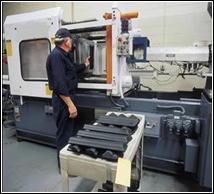
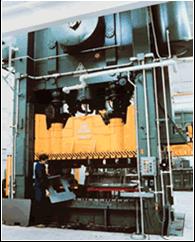
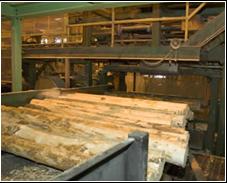
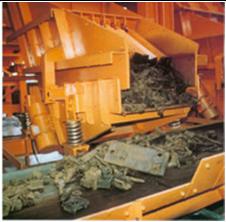

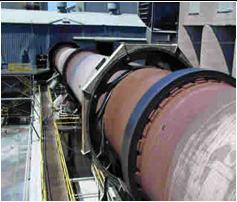

|
GX Series Inverters (Engineered Drives) |
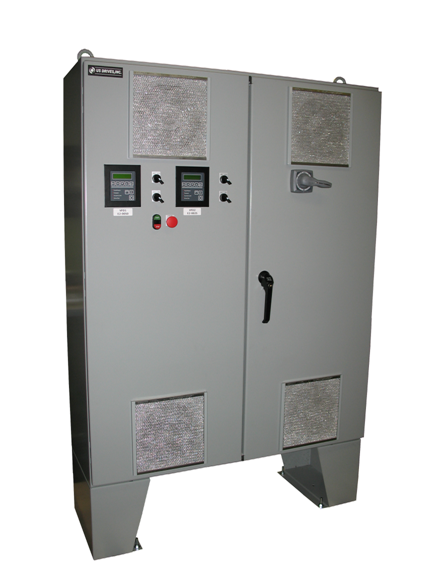
|
The GX series of inverters consist of various configurations of a common inverter module that can be programmed and connected to form the following: * Regenerative Load Bank System * Grid-Tie Inverter * AFE Inverter |
|
Regenerative Load Bank System The Regenerative Load Bank System (RLBS) can be used in many applications such as: factory testing of engine generators, factory endurance testing of UPS systems, factory testing of inverters, factory testing of hydro generators, factory testing of wind generators, testing of aircraft, power generators, testing of auxiliary power units and testing of ground power units.
|
|
RLBS (see Figure 1) consists of two inverter sections: * The Regenerative Load Bank Inverter section (RLBI) that synchronizes and connects to a three-phase AC Device Under Test (DUT), such as a UPS or generator. This section converts three-phase AC output power from the DUT to DC power. * Active Front End inverter section (AFE) that synchronizes and connects to the AC power grid. It regulates the DC bus voltage level by allowing real current to flow from the AC power grid into the DC bus when the DUT is not being loaded by the RLBI or allowing real current to flow from the CB bus to the AC power grid when the DUT is being loaded by the RLBI. |
|
Some of the features of the Regenerative Load Bank System (RLBS): * 98% energy saved * RLBS and AFE modules are physically the same hardware-wise and only have to be programmed as an RLBS or AFE module. This means that a common module can be programmed as an RLBS or AFE module to increase system capacity or to replace a failed module. * User adjustable load setpoint * Digital or analog load reference * Built-in function generator for load profile * Sinusoidal AC current (Total Harmonic Distortion (THD) <5%) * Very fast response * Very fine load step resolution * Manual & remote control by way of programmable digital inputs, analog inputs or Modbus RTU serial port * Programmable power type: resistive, reactive, capacitive or any combination * Programmable power factor, defaulted to unity |
|
Grid Tie Inverter The Grid Tie Inverter (GTI) (see Figure 2) is designed to convert a DC power source to three-phase AC power. Despite its name, in addition to operating by connecting and synchronizing to the AC power grid to export power, it can also operate in a stand-alone or “off-grid” mode where it can power a three-phase AC load independent from the AC grid. In the “off-grid” mode, it can also ramp up its three-phase voltage and frequency output to accelerate a dedicated motor load without an in-rush current like a VFD.
Some of the features of the GTI: * 98% efficiency * Unity power factor * Sinusoidal AC current (Total Harmonic Distortion (THD) <5%) * User adjustable output real current setpoint to adjust exported power in grid-tied mode * Adjustable output power limit in grid-tied mode * Current limit and auto boost for motor control in off-grid mode * Internal PID loop with function blocks to implement such things as Sleep Mode Pressure PID in the off-grid mode * The inverter draws zero watts of tare power from the AC grid when it shuts down due to low DC bus level * Very fast response * Programmable power type: resistive, reactive, capacitive or any combination * Manual & remote control by way of programmable digital inputs, analog inputs or Modbus RTU serial port |
|
AFE Inverter The Active Front End Inverter section (AFE) synchronizes and connects to the AC power grid. It is designed create and maintain the DC bus required by 4-quadrant (regenerative) AC motor inverters (VFD’s) (see Figure 3) or as a component of the RLBS mentioned above (see Figure 1). 2-quadrant (non-regenerative) VFD’s have a three-phase diode rectifier front end that creates the DC bus but power can only flow from the AC line to the DC bus and the line current is non-sinusoidal (high THD). The AFE replaces the three-phase diode rectifier front end for the VFD and regulates the DC bus voltage level by allowing real AC line current to flow from the AC power grid into the DC bus when the VFD is supplying power to the AC motor (motoring) or by allowing real AC line current to flow from the DC bus to the AC power grid when the AC motor is supplying power to the DC bus (regeneration). The real AC line current controlled by the AFE is very sinusoidal (Total Harmonic Distortion (THD) < 5%) for applications that require low harmonics. One can connect the AFE DC bus terminals to the DC bus terminals of our standard Phoenix DS or Phoenix ES VFD’s and transform them from 2-quadrant non-regenerative VFD’s to 4-quadrant regenerative VFD’s.
Some of the features of the AFE: * 98% efficiency * User adjustable DC bus voltage * Manual & remote control by way of programmable digital inputs, analog inputs or Modbus RTU serial port * Two-way power flow * Sinusoidal AC current (Total Harmonic Distortion (THD) <5%) * Very fast response * Unity power factor |
|
Figure 1 |
|
Figure 2 |
|
For more information |
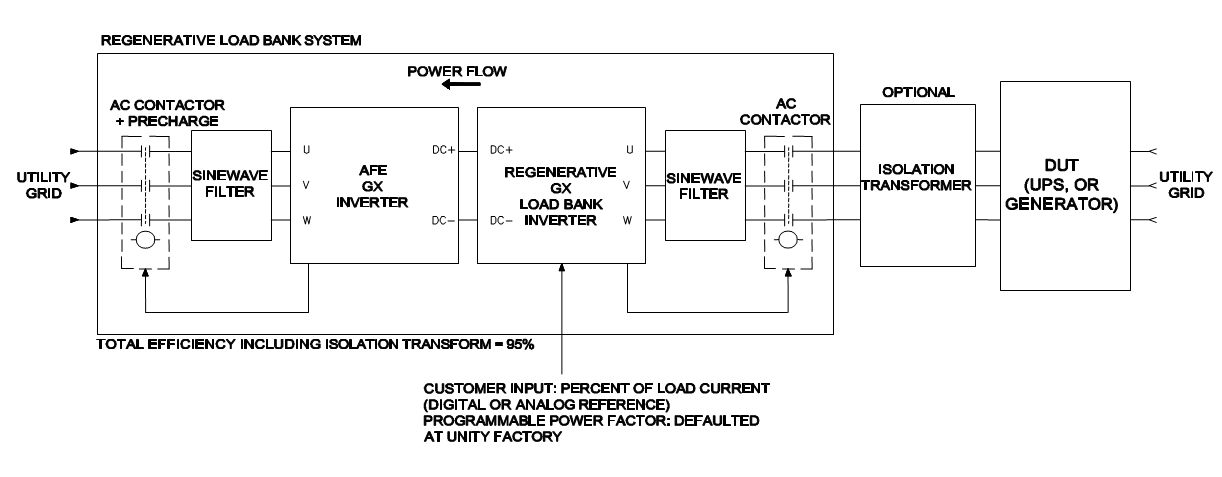
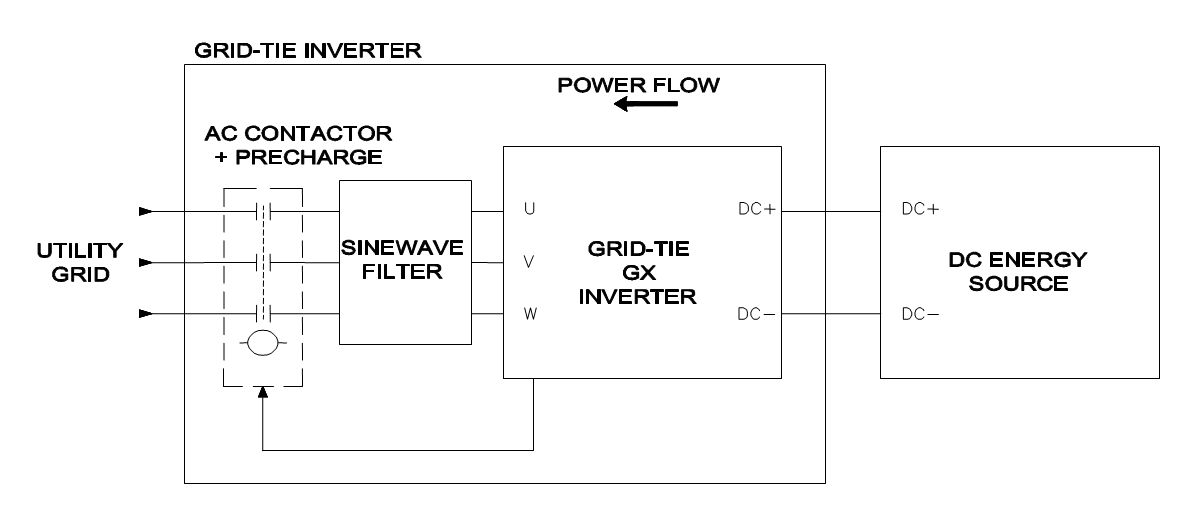
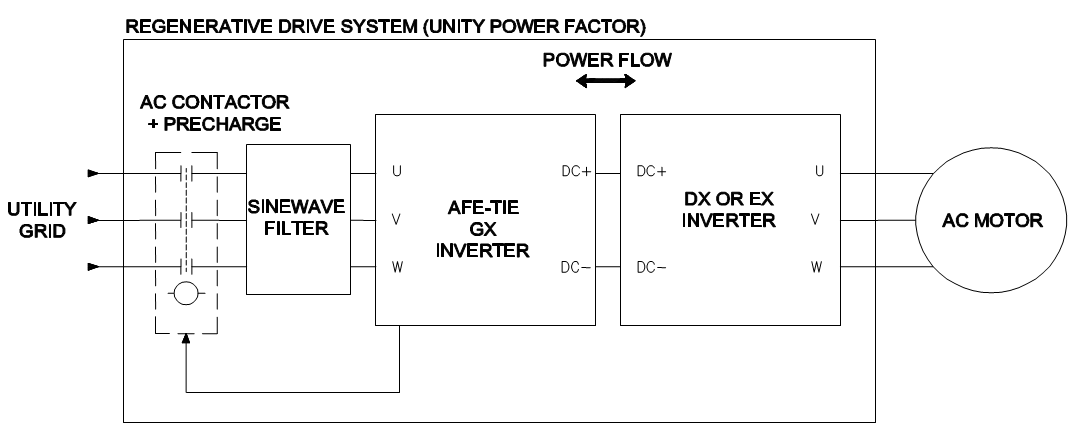
|
Figure 3 |

|
Product List |


|
Contact Us |


|
Home |


|
Photo Gallery |


|
Applications |


|
Downloads |


|
Product List |

|
Home |

|
Downloads |

|
Applications |

|
Photo Gallery |

|
Contact Us |






